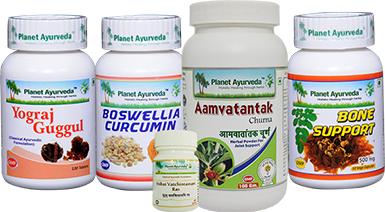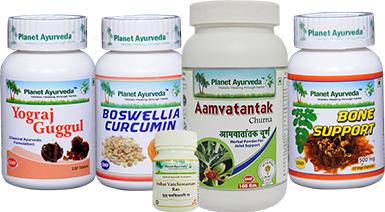Abstract
Thoracic outlet syndrome is a group of various disorders or a collection of symptoms associated with shoulder and upper extremity. The symptoms include sensation of numbness, tingling and pain. The thoracic outlet syndrome is a condition in which compression of the arteries, veins and nerves occur in the passage from lower neck to the armpit. Nerve compression is the most common and so are the symptoms of nerve compression. Diagnosis and identification of thoracic outlet syndrome is a tough and complex thing. Early diagnosis is essential to prevent worsening of the condition. In the following text, we shall discuss some details of thoracic outlet syndrome and its management.
Introduction
Thoracic outlet syndrome is term used for the space present in between the upper chest and lower neck where the group of nerves and blood vessels is found. Thoracic outlet syndrome is a group of disorders that are related to the compression of the nerves and blood vessels of the area present in the upper chest and the lower neck. In Ayurveda, thoracic outlet syndrome can be correlated according to the symptoms with vata, kapha dosha vitiation. The formation of aam by vitiation of kapha dosha is also considered to cause thoracic outlet syndrome. Therefore the ayurvedic management is based on the pacification of vata dosha.

Causes
- Aetiology is not well understood.
- But the compression of the nerves and blood vessels is the only known cause.
- Extra first rib
- Fracture of the clavicle (collarbone)
- Soft tissue and bone abnormalities are another cause of thoracic outlet syndrome.
- Obesity can cause thoracic outlet syndrome as the extra fat can compress nerves and blood vessels.
- Repetitive arm and shoulder movements
- Whiplash injury
Risk Factors
- Tumours or enlarged lymph nodes in the underarm and upper chest.
- Depression and stress
- Repetitive injuries of clavicle due to heavy weight lifting
- Poor posture
- Sleep disorders
Types of thoracic outlet syndrome
1. Neurogenic thoracic outlet syndrome
It occurs due to compression of the nerves that passes from neck to the arms (brachial plexus). more than 91 % of cases are of neurogenic thoracic outlet syndrome.
2. Venous thoracic outlet syndrome
It occurs due to compression of the vein. It usually leads to thrombosis of the upper body. There are 5% cases of thoracic outlet syndrome.
3. Arterial thoracic outlet syndrome
It occurs due to compression of the artery. There are a few cases of arterial thoracic outlet syndrome.
Arterial and venous syndromes together are known as vascular thoracic outlet syndrome.
Symptoms
- Weakness in the shoulder and arm
- Tingling sensation in the fingers
- Discomfort in the shoulder, arms and fingers
- Early tiring of the arm
- Pain is felt in the shoulder and arm
- Atrophy of the thumb pad is a rare symptom
- Painful and tingling sensation in the arm and hand.
- Blueness of the arm and hand
- Prominence of veins in the neck, shoulder and hand.
- Swelling can be found in the hand, arm and fingers.
- Pale and cold hand
- Pain in the extremity mainly during overhead activity of the arm
- Subclavian artery aneurysm
Diagnosis and Evaluation
- Complete medical history is essential
- Physical manoeuvres to stimulate symptoms
- Nerve conduction tests
- Duplex ultrasound to rule to stenosis or blockage of blood vessels
- Chest X-Ray to look out for any bony deformity
- Cervical spine X-Ray is helpful in ruling out any deformity related to cervical spine
- CT scan and MRI is of help
- Brachial plexus block
Management
1. Physical therapy
It is the most initial and common treatment of neurogenic thoracic outlet syndrome. It helps in increasing the range of motion of the shoulders and neck. It helps in strengthening muscles. It improves posture.
2. Medications
Analgesics like paracetamol, aspirin, ibuprofen etc are used to alleviate pain. Anticoagulants and thrombolytic medications are used in the venous thoracic outlet syndrome
3. Surgery
Surgery is indicated in severe cases to correct the compressions.
Risks involved in surgical intervention
- Bleeding due to accidental injury to the major blood vessel.
- Pneumothorax that is also known as collapsed lung.
- Nerve injuries are the most common risk in extensive surgical procedures.
Ayurvedic Management
All the symptoms associated with thoracic outlet syndrome are well correlated with vata and kapha dushti. Therefore, the treatment protocol depends on the pacification of these vitiated dosha. There are various herbs like methi ( Trigonella foenumgraecum), shunthi (Zingiber officianale) etc which pacify the vata and kapha dosha.
Herbal Remedies for Thoracic Outlet Syndrome by Planet Ayurveda
Planet Ayurveda is a well known GMP certified, ISO 9001:2015 certified and US-FDA registered Ayurvedic Company, which adhered to the aim of manufacturing quality Ayurvedic products as mentioned in the various ancient texts of Ayurveda. formulations are manufactured without additives and preservatives and other kinds of chemicals or artificial flavouring agents which causes a number of side effects on the human body. Products prepared at Planet Ayurveda are pure and do not contain any kind of adulteration. The products are purely organic and vegetarian and gluten free. Planet Ayurveda presents its products which are beneficial in muscular and bone health. Further there are many other products which have analgesic and healing properties, which make them efficient in curing Thoracic Outlet Syndrome.
Following is the list of products that are great in managing thoracic outlet Syndrome- Yograj Guggul
- Boswellia Curcumin
- Aamvatantak churna
- Vrihat Vatchintamani Ras
- Bone Support


Product Description
1. Yograj Guggul
Yograj Guggul is a classical ayurvedic proprietary medicine. It is a helpful formulation in the musculoskeletal system and neurological system's disorders. It contains the herbs amalaki ( Emblica officinalis), guggul ( Commiphora mukul), haritaki ( Terminalia chebula), ela ( Elettaria cardamomum), vidang ( Embelia ribes), gokshur ( Tribulus terrestris), shunthi ( Zingiber officinale), bibhitaki ( Terminalia bellirica) etc. The herbs of the formulation possess properties that enhance muscle and nerve health. By its nerve strengthening property Yograj Guggul is best to treat the neurological thoracic outlet syndrome.
Dosage : Two tablets twice a day with lukewarm water after meals.
2. Boswellia Curcumin
Boswellia Curcumin capsules are enriched with the goodness of shallaki ( Boswellia aristata) and haridra ( Curcuma longa). The herbs have healing properties and also possess analgesic effects which makes it an efficient formulation in the thoracic outlet syndrome.
Dosage : Two capsules twice a day with lukewarm water after meals.
3. Aamvatantak Churna
Aamvatantak Churna is known to pacify kapha and vata doshas, which are behind the thoracic outlet syndrome. The product contains ashwagandha ( Withania somnifera), suranjaan ( Colchicum autumnale), haridra ( Curcuma longa), methi ( Trigonella foenumgraecum), gorakhmundi ( Sphaeranthus indicus) and sonth ( Zingiber officinale). Aamvatantak Churna clears aam and relieves the patient from stiffness and eases motion of the limb. Furthermore, it alleviates pain and other symptoms of thoracic outlet syndrome.
Dosage : -One tsp twice a day with warm water after a meal.
4. Vrihat Vatchintamani Ras
Vrihat Vatchintamani Ras is a mineral formulation. The formulation contains Rajata Bhasma ( silver calx), Swarna Bhasma ( gold calx), Loha Bhasma ( iron ash), Abhrak Bhasma ( mica ash), Suta Bhasma ( compound of purified mercury and purified sulphur), Mukta Bhasma ( pearl calx) and Pravala Bhasma ( coral calcium). It also contains juice extract of Aloe vera. It is beneficial in demyelination conditions of nerves. It is useful in neuropathies. It corrects neuritis. It is helpful in thoracic outlet syndrome as it relieves numbness, pain and motor dysfunction.
Dosage : One tablet twice a day with lukewarm water after meals.
5. Bone Support
As the name of 'Bone Support' suggests it supports the bone by supplying all the required material to the bone. Its ingredients include laksha ( Laccifer lacca), shobhanjan beej ( Moringa oleifera), Asthi Shrinkhala ( Cissus quadrangularis), Mukta ( pearl calcium), praval pishti ( Corallium rubrum) and Arjuna ( Terminalia arjuna). Moringa oleifera possesses anti inflammatory, analgesic and vidhradhi pachan (healing of abscess). Ingredients are beneficial in bone disorders. Cissus quadrangularis is helpful in bone health. It is a beneficial herb for healing fractures. It possesses sandhaniya property which means adhesion, hence it adhesives the fractured bones. In addition to this, it relieves fracture pain and heals swelling due to fracture. Thus it is a beneficial herb in the fractures. Arjuna has vranropan property which means wound healer. It too helps in adhesion of fracture bones. Praval pishti and mukta are natural supplements of calcium which are derived from the pearls, corals etc. thus are beneficial in early healing or adhesion of the fractured bone. Thus Bone Support has a magnificent healing and analgesic effect. Therefore it manages the bone health in the fracture or bone abnormality generated thoracic outlet syndrome.
Dosage : One capsule twice a day after meals with plain water.
Contact Planet Ayurveda to provide you the costing / ordering and delivery information at - [email protected] or call at +91-172-5214030 Or Check Website - www.PlanetAyurveda.com
Conclusion
As we discussed Thoracic Outlet Syndrome, we have come to know that it is a bundle of disorders that arise due to compression of nerves and blood vessels. And as per Ayurveda, the syndrome is due to kapha and vata dosha vitiation. As in the contemporary system of medicine, there are drugs that help in alleviating symptoms but do not properly cure the syndrome and in the end, surgery is the last option that remains, which further is full of risks. Whereas, Ayurveda has promising results which suggests proper management of the condition with no risk and side effects involved. Planet Ayurveda's above mentioned products heals the condition, alleviates the symptoms and increases range of motion of the affected side. By adopting Ayurveda, one can assure oneself about his proper wellbeing to be returned with a healthy body and mind.
Dr. Vikram Chauhan (MD - Ayurveda) is the CEO and Founder of Planet Ayurveda Pvt. Ltd. He is Author of the Book "Ayurveda - God's Manual For Healing". He is an Ayurveda Expert Serving People worldwide through all the Possible Mediums, Operating from Main Branch in Mohali, India. With his Vast Experience in Herbs and their Applied Uses, he is successfully treating Numerous Patients suffering from Various Ailments with the help of Purest Herbal Supplements, Diet, and Lifestyle, according to the Principles of Ayurveda. For More Details, visit www.PlanetAyurveda.com.
View more posts from this author
- Aetiology is not well understood.
- But the compression of the nerves and blood vessels is the only known cause.
- Extra first rib
- Fracture of the clavicle (collarbone)
- Soft tissue and bone abnormalities are another cause of thoracic outlet syndrome.
- Obesity can cause thoracic outlet syndrome as the extra fat can compress nerves and blood vessels.
- Repetitive arm and shoulder movements
- Whiplash injury
- Tumours or enlarged lymph nodes in the underarm and upper chest.
- Depression and stress
- Repetitive injuries of clavicle due to heavy weight lifting
- Poor posture
- Sleep disorders
- Weakness in the shoulder and arm
- Tingling sensation in the fingers
- Discomfort in the shoulder, arms and fingers
- Early tiring of the arm
- Pain is felt in the shoulder and arm
- Atrophy of the thumb pad is a rare symptom
- Painful and tingling sensation in the arm and hand.
- Blueness of the arm and hand
- Prominence of veins in the neck, shoulder and hand.
- Swelling can be found in the hand, arm and fingers.
- Pale and cold hand
- Pain in the extremity mainly during overhead activity of the arm
- Subclavian artery aneurysm
- Complete medical history is essential
- Physical manoeuvres to stimulate symptoms
- Nerve conduction tests
- Duplex ultrasound to rule to stenosis or blockage of blood vessels
- Chest X-Ray to look out for any bony deformity
- Cervical spine X-Ray is helpful in ruling out any deformity related to cervical spine
- CT scan and MRI is of help
- Brachial plexus block
- Bleeding due to accidental injury to the major blood vessel.
- Pneumothorax that is also known as collapsed lung.
- Nerve injuries are the most common risk in extensive surgical procedures.
- Yograj Guggul
- Boswellia Curcumin
- Aamvatantak churna
- Vrihat Vatchintamani Ras
- Bone Support



